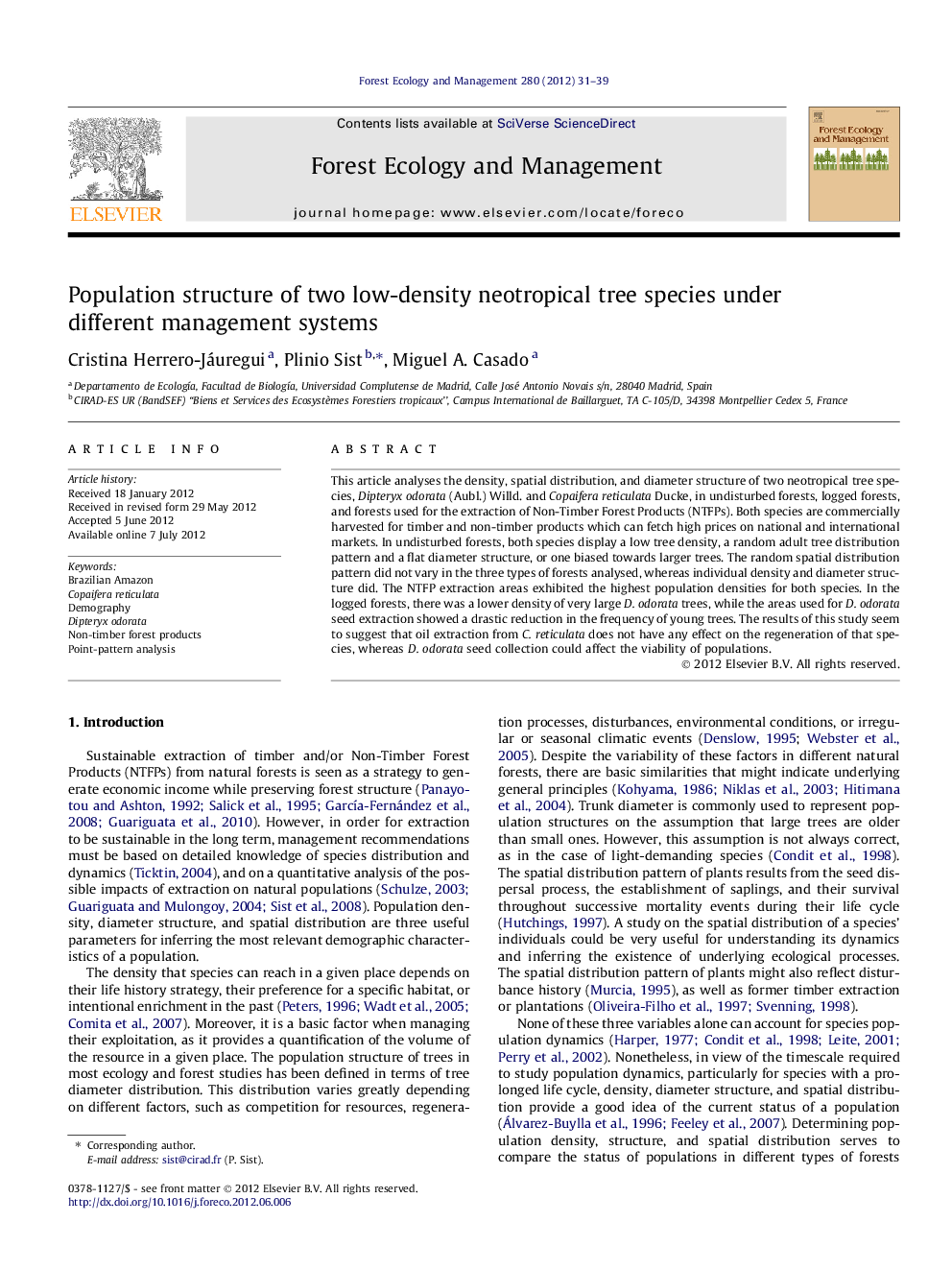| کد مقاله | کد نشریه | سال انتشار | مقاله انگلیسی | نسخه تمام متن |
|---|---|---|---|---|
| 87353 | 159247 | 2012 | 9 صفحه PDF | دانلود رایگان |

This article analyses the density, spatial distribution, and diameter structure of two neotropical tree species, Dipteryx odorata (Aubl.) Willd. and Copaifera reticulata Ducke, in undisturbed forests, logged forests, and forests used for the extraction of Non-Timber Forest Products (NTFPs). Both species are commercially harvested for timber and non-timber products which can fetch high prices on national and international markets. In undisturbed forests, both species display a low tree density, a random adult tree distribution pattern and a flat diameter structure, or one biased towards larger trees. The random spatial distribution pattern did not vary in the three types of forests analysed, whereas individual density and diameter structure did. The NTFP extraction areas exhibited the highest population densities for both species. In the logged forests, there was a lower density of very large D. odorata trees, while the areas used for D. odorata seed extraction showed a drastic reduction in the frequency of young trees. The results of this study seem to suggest that oil extraction from C. reticulata does not have any effect on the regeneration of that species, whereas D. odorata seed collection could affect the viability of populations.
► In undisturbed forests both species presented a low density of individuals.
► The NTFP extraction areas exhibit the highest population densities for both species.
► Young trees of Dipteryx odorata showed a lower density in areas of seed harvesting.
► Timber extraction lowered the density of very large trees.
Journal: Forest Ecology and Management - Volume 280, 15 September 2012, Pages 31–39